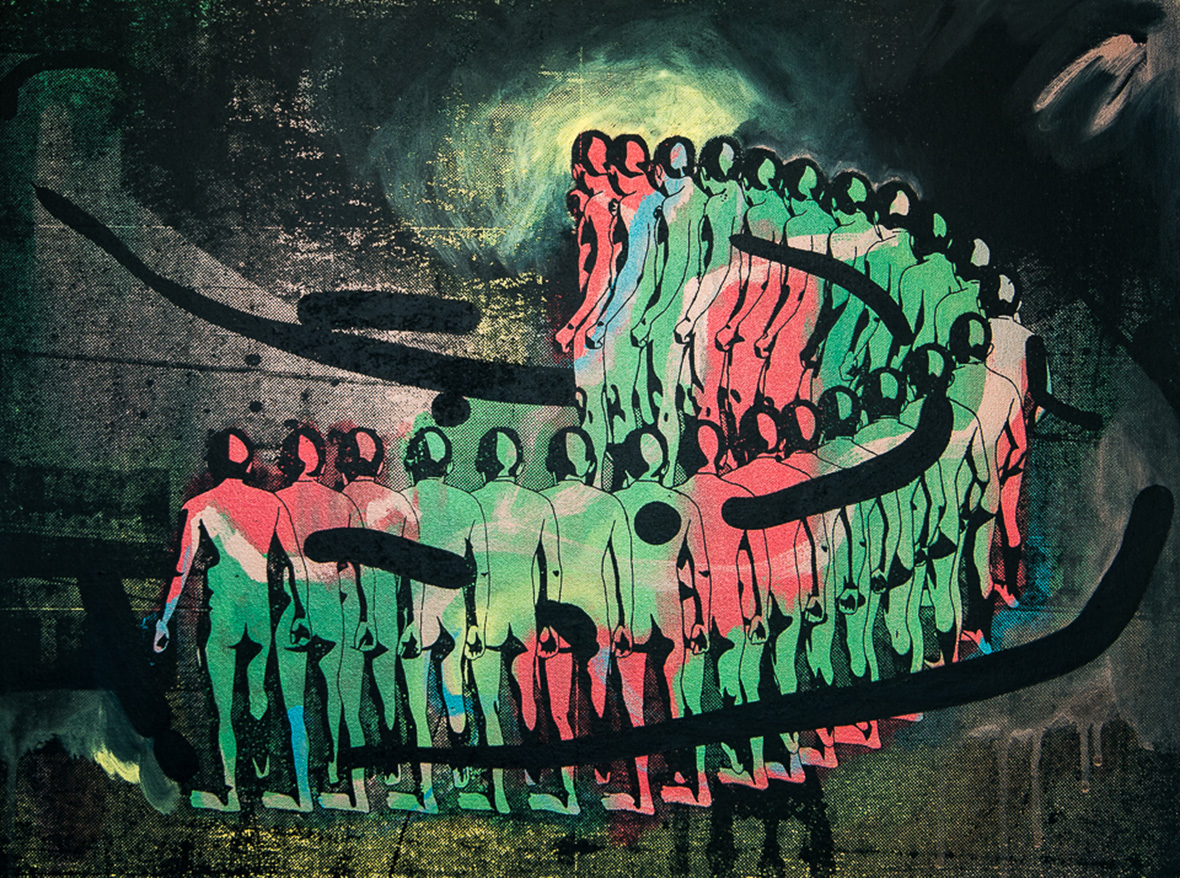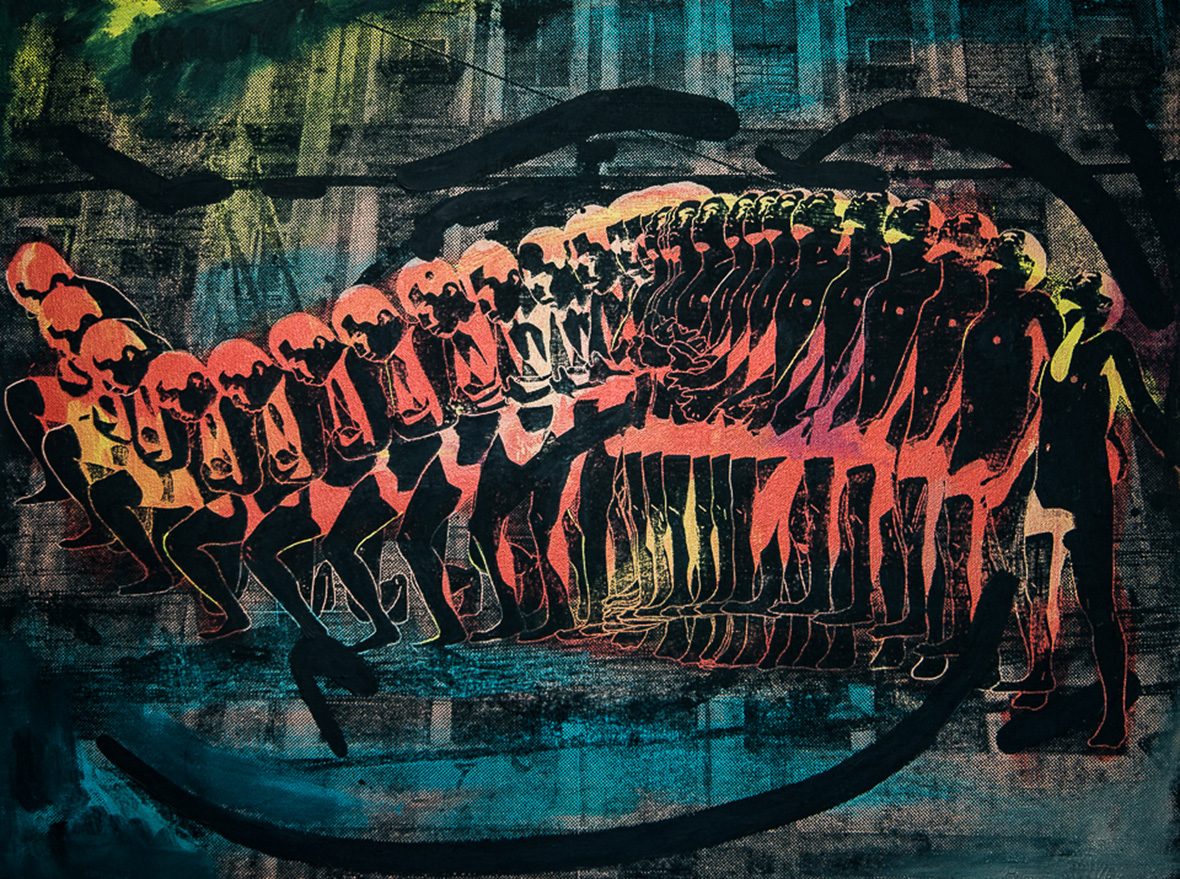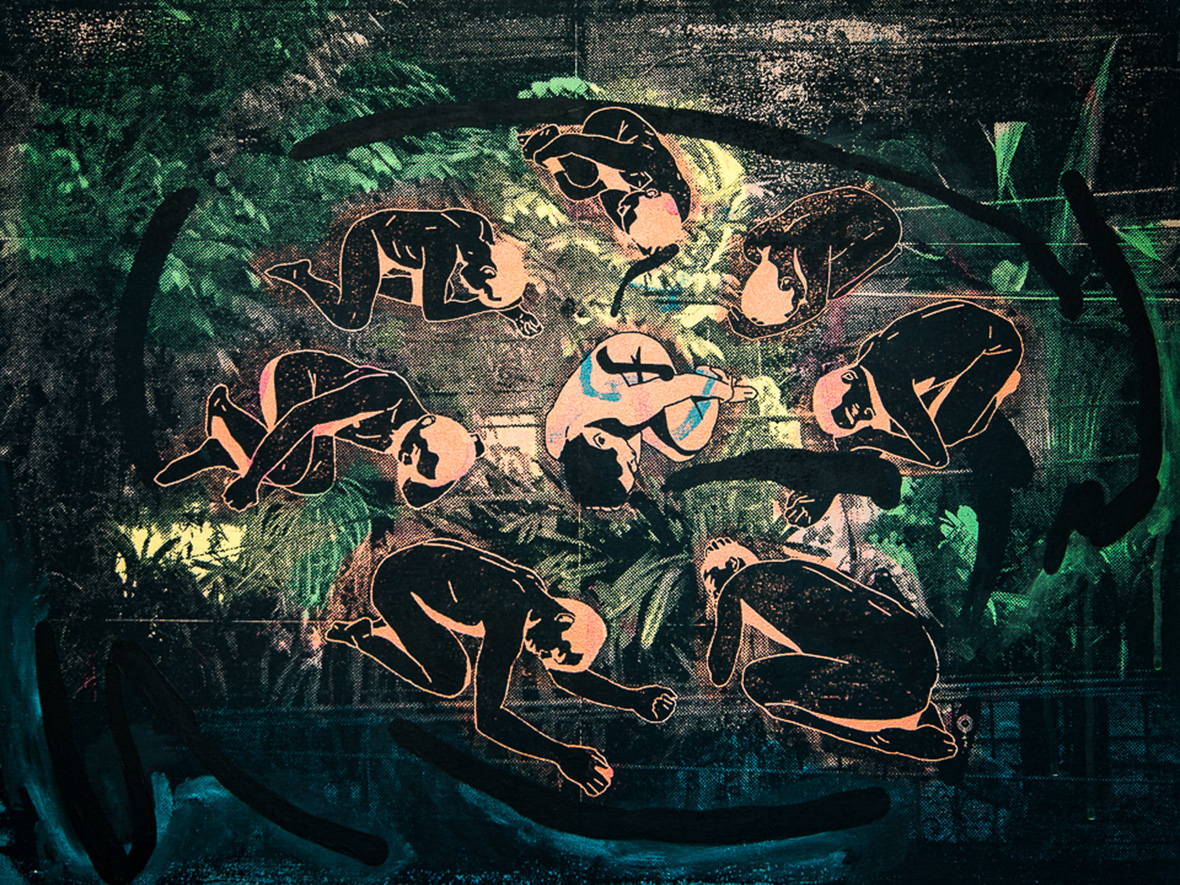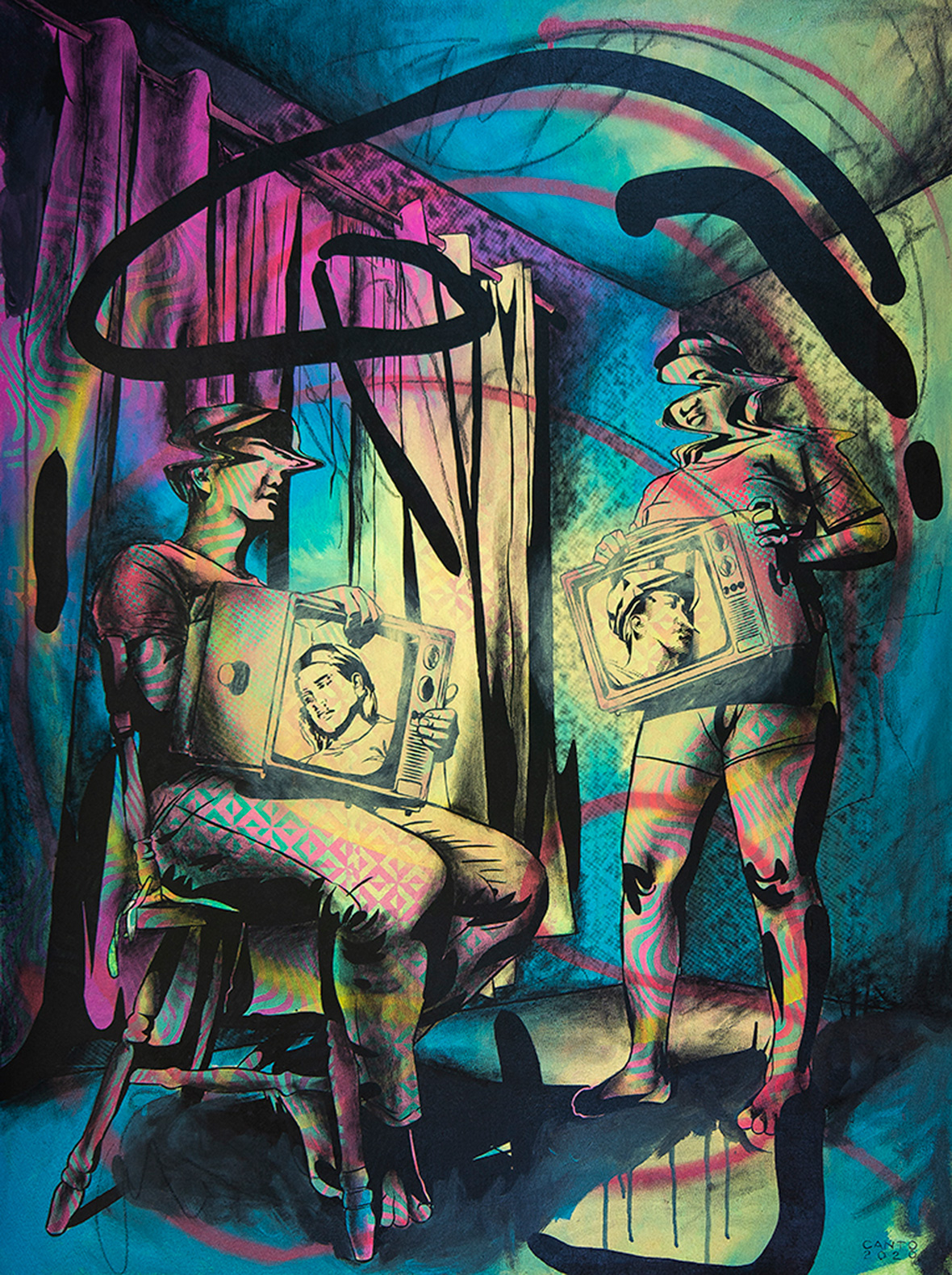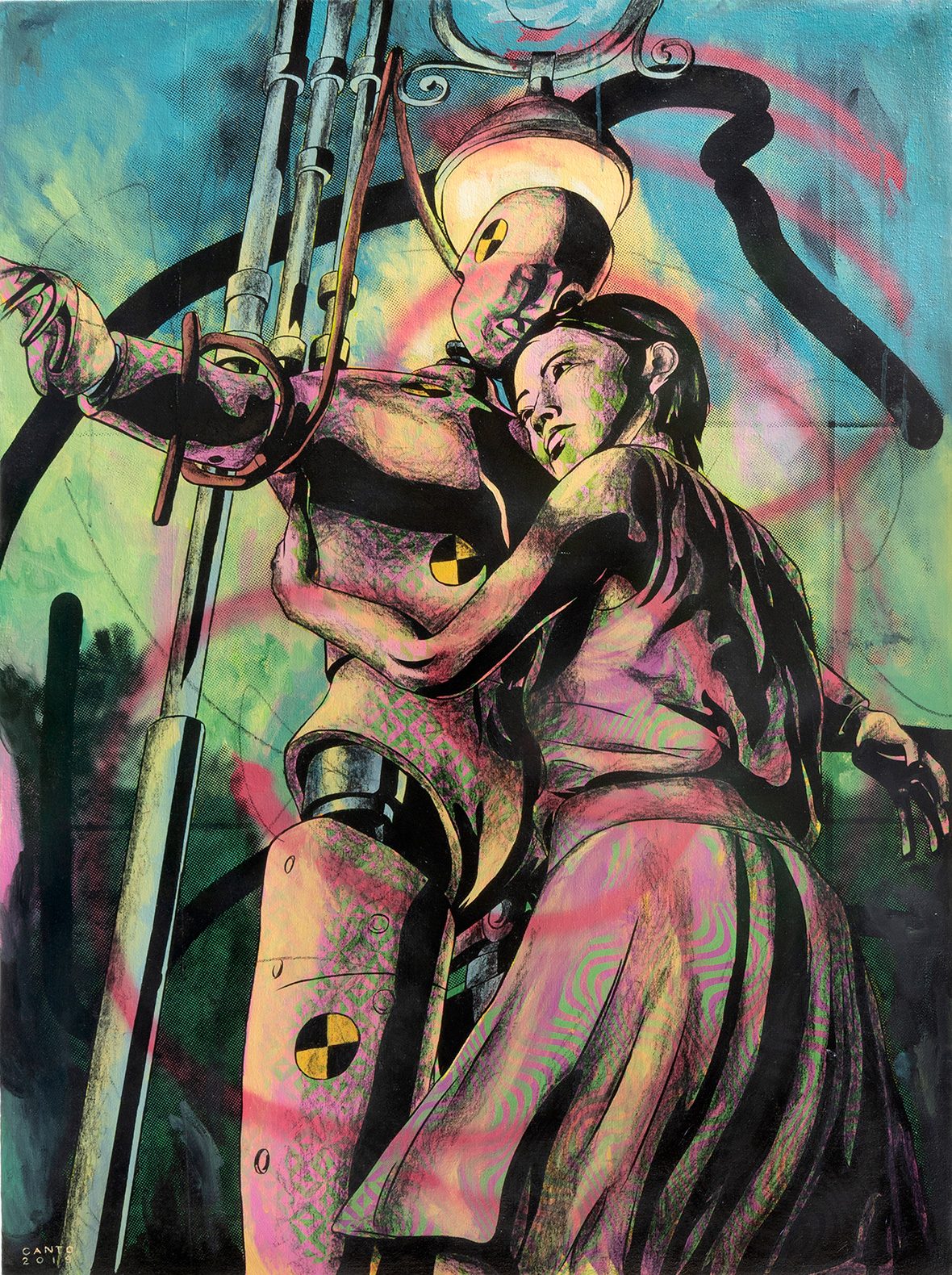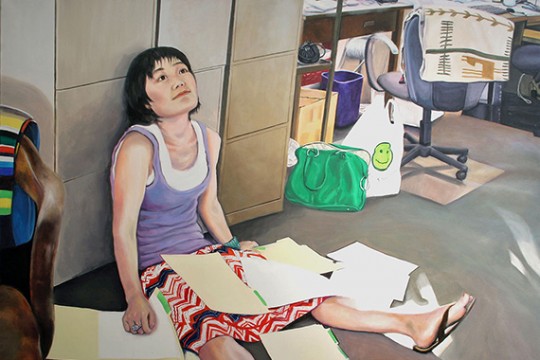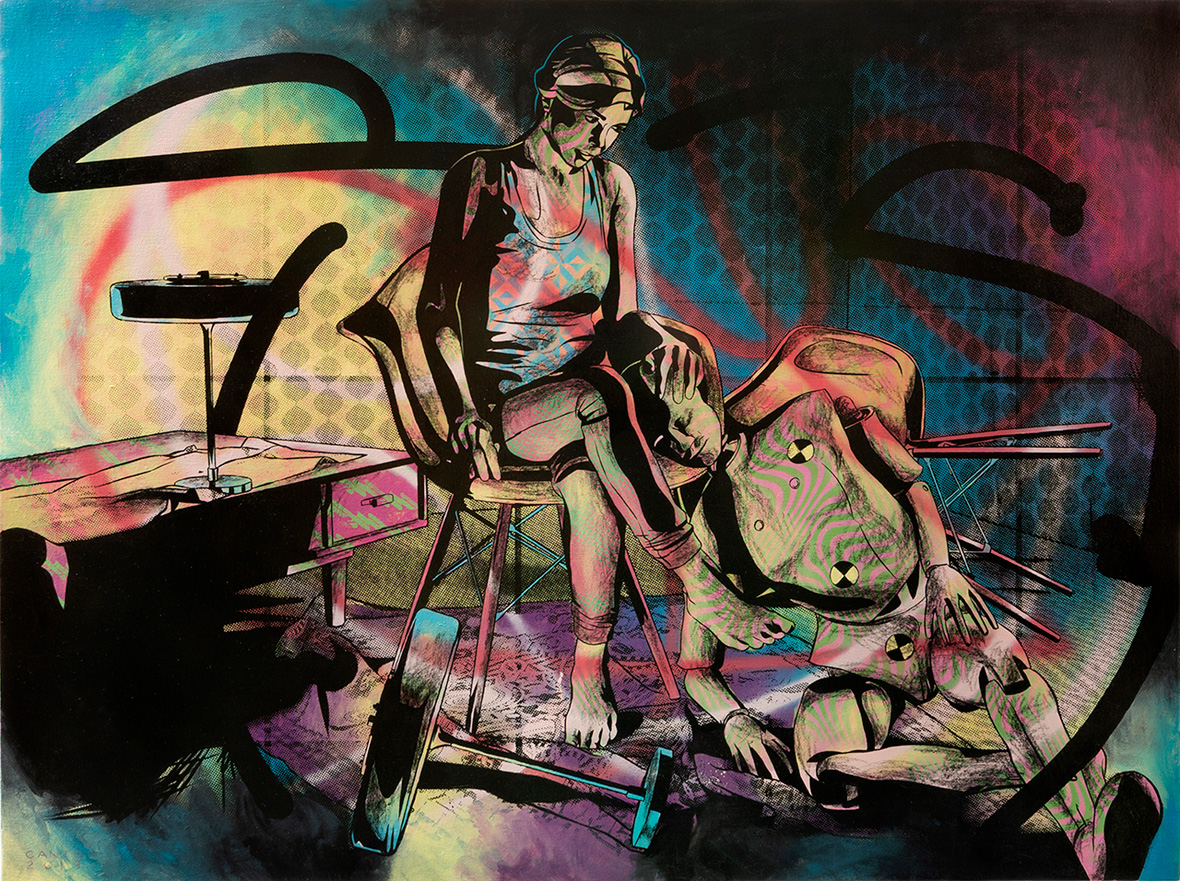
Reality is what you make of it. But just because everyone around you believes in something doesn’t mean that it’s true. John Lawrence Canto recognizes how media filters the reality in front of us and the growing importance of translating the facts on the ground correctly. Questions about how media changes our understanding of ourselves and the world have been around since the days of the printing press, and it’s a subject that the Filipino artist continues to zero in on today. He even recognizes his own artwork as affecting people’s perceptions of the world and tries to use that tool for the common good.
现实存在于每个人的理解,并不是所有人都相信的事物就是真的。菲律宾艺术家 John Lawrence Canto 认为,大众传播工具往往将现实加上各种滤镜再呈现给人们,反倒让真正的现实变得愈发罕见。自印刷机问世以来,人们就一直在探讨传播工具如何改变人们对自己和世界的理解,而这也是 John 在当下所关注的话题。他甚至认为,自己的艺术作品也会影响观众对世界的看法,并试图通过自己的绘画为人们带来一些积极作用。
Canto’s mixed-media canvases use serigraph printing techniques with distinctive halftone shading, evoking the comic-book aesthetic of the past. His subjects are often warped as if being viewed from a strange angle on a piece of paper and television sets populate many scenes, a symbol for all the different media that populate our lives. Sunday morning comics, ‘70s pop art, and janky photocopiers are all fair game to him. His work is steeped in these vintage techniques and references to different eras of media from the past century. But he uses them to deal with contemporary issues head on.
John 的多媒体混合艺术作品运用了丝网印刷工艺,加上独特的半色调着色,勾兑出老式漫画的风格。他笔下的人物角色看起来以某种奇怪的角度弯曲在纸面上。此外,屏闪的电视机常常画中诸多的场景出现,以此隐喻生活中无处不在的传播工具。周日晨间漫画,70 年代的波普艺术和笨重的影印机都是他常用的素材。他在作品中运用各种老派的绘画技巧,糅合上世纪不同媒体时代的元素,揭示着当代我们所处的社会问题。
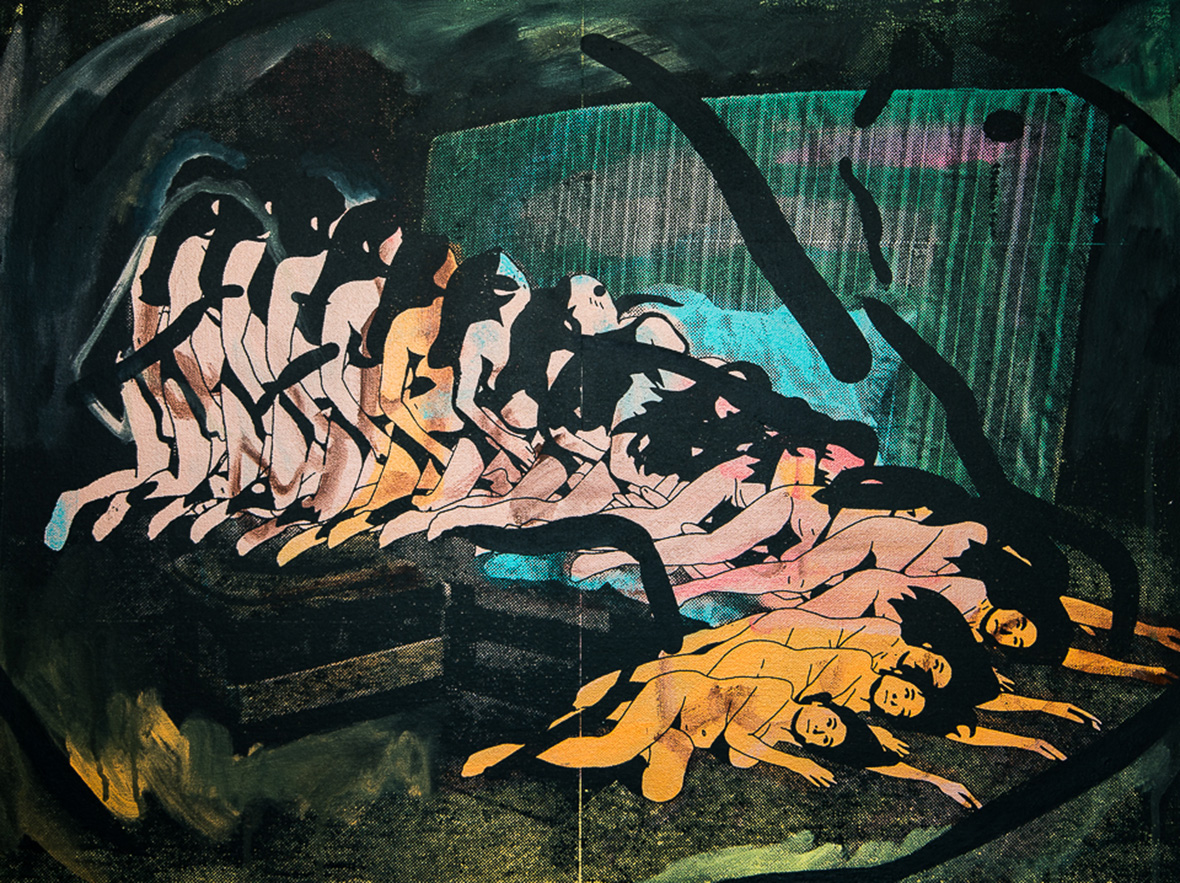
Canto revels in CMYK palettes, leaning on these color schemes to evoke imagery of comic-book art and aging adverts. Faces are discolored and colors don’t quite perfectly stay within the fill lines. Everything is saturated and surreal, casting a discomfiting vibe to styles once used to communicate aspirational imagery. The people he depicts are regularly swirling in a way that resembles a cathode-ray tube set struggling to lock onto a wavelength. Other times, his painted characters aren’t even people at all, but crash-test dummies.
John 十分偏爱 CMYK(印刷四分色模式,运用青色、洋红色、黄色和黑色在纸张上实现全彩印刷),这种类型的印刷色总令他回想起漫画书和旧时广告。他的作品中,人物面部往往不做过多着色,画面的颜色分布也并不受线条限制。所有的一切都被深色背景包围,一股浓郁的超现实感从画面中冒出。他笔下的人物仿佛正围绕着超声波长在扭曲地旋转排列。除此之外,面中的人物有时甚至只是撞车测试的假人。
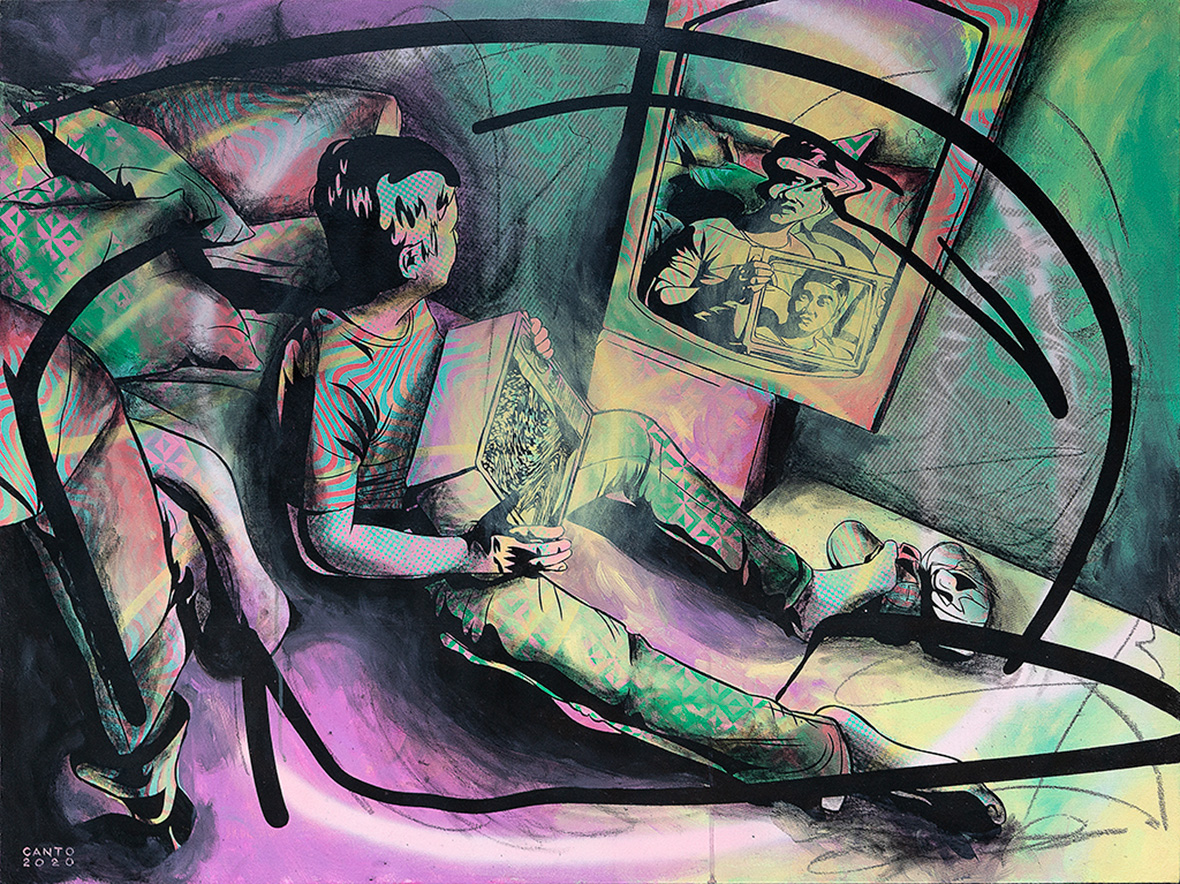
In an era of algorithmic content, Canto captures the anxiety that constantly plagues so many of us. In his art, subjects run around with an unrelenting, nervous energy, no longer guided by the existential answers once offered by religion and philosophy. Instead, his characters are shown blindly chasing make-believe goals and vainly filling their homes with the latest appliances and gadgets.
In Watch Out For The Pothole, they meander aimlessly about, recklessly crashing into objects and themselves. They’re cloned ad infinitum in Too Much Thinking until it’s unclear which is the real character. Even the characters themselves can’t seem to tell who’s who, nor do they care, as they swing construction tools wildly at the fun-house mirrors surrounding them in Dig Ourselves Out Of A Hole. Eventually, they start spiraling uncontrollably, as depicted in Inside This Faulty Machine. This most recent series is colored more darkly than usual because of quarantine and features an out-of-control, circular repetition resembling a zoetrope.
算法时代,John 尝试用作品捕捉困扰许多人那种焦虑情绪。因此,他刻意在作品中营造出某种混乱与紧迫感,是宗教和哲学理论都未能解决或阐述的混沌状态。画中的人们盲目地追逐着不切实际的目标,用新款的电器和设备填满他们的家,也难以填满他们焦虑和虚空的内心世界。
在作品《Watch Out For The Pothole》(当心路坑)中,漫无目的的人彼此徘徊,他们东倒西歪,不停撞向对方或自己;在作品《Too Much Thinking》(想太多)中,人物被无限复制,他们根本无法辨认哪一个才是真生的自己,但倒也显得满不在乎;在另一幅名为《Dig Ourselves Out Of A Hole》(从洞中挖出自己)的作品中,他们对着四周的哈哈镜疯狂地挥舞着建筑工具;最后,在新作《Inside This Faulty Machine》(在故障机器)中,人们开始失控。由于近期的疫情,这个新系列的色调比 John 以往更加灰暗。而整个系列看起来就像一个圆柱形的幻影灯,呈现着人们失控和崩溃的轮回。
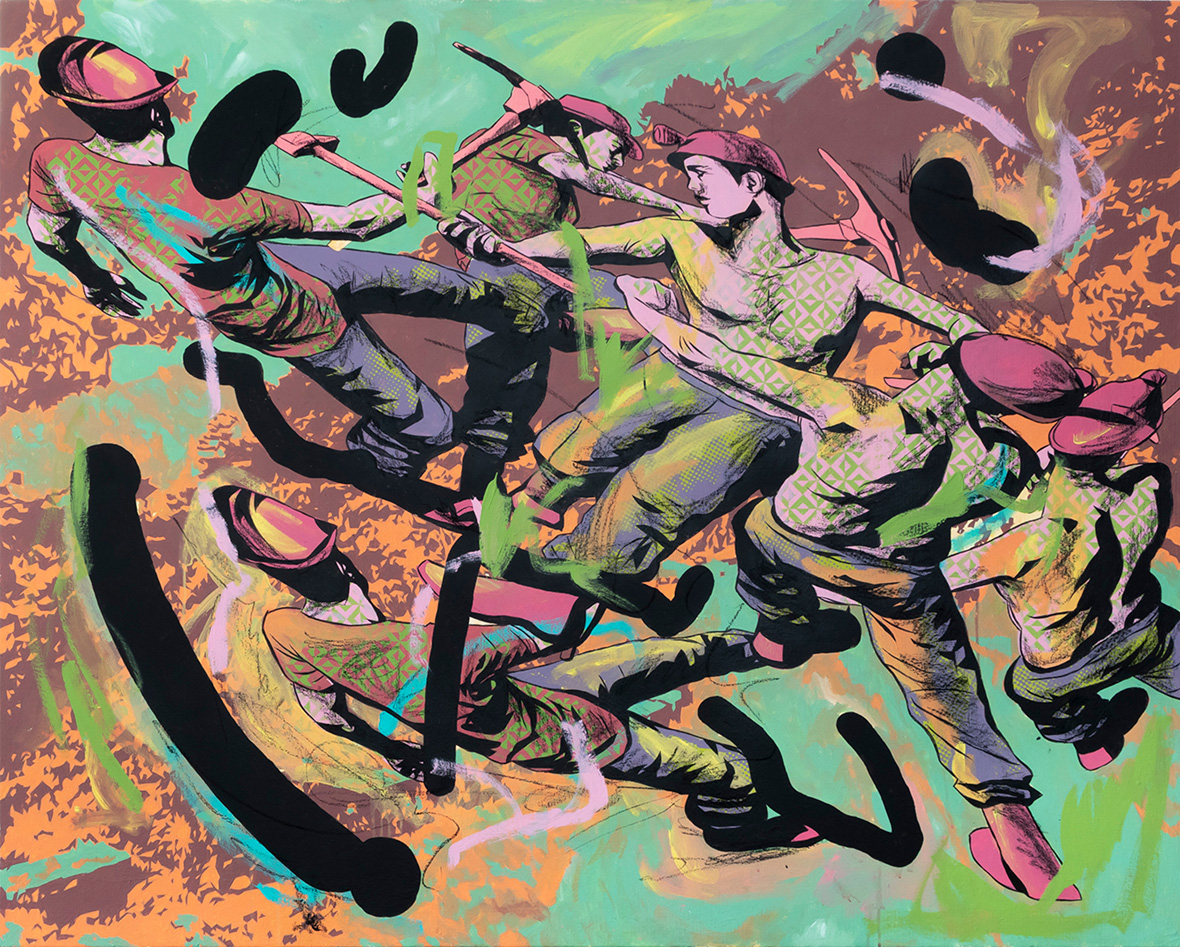
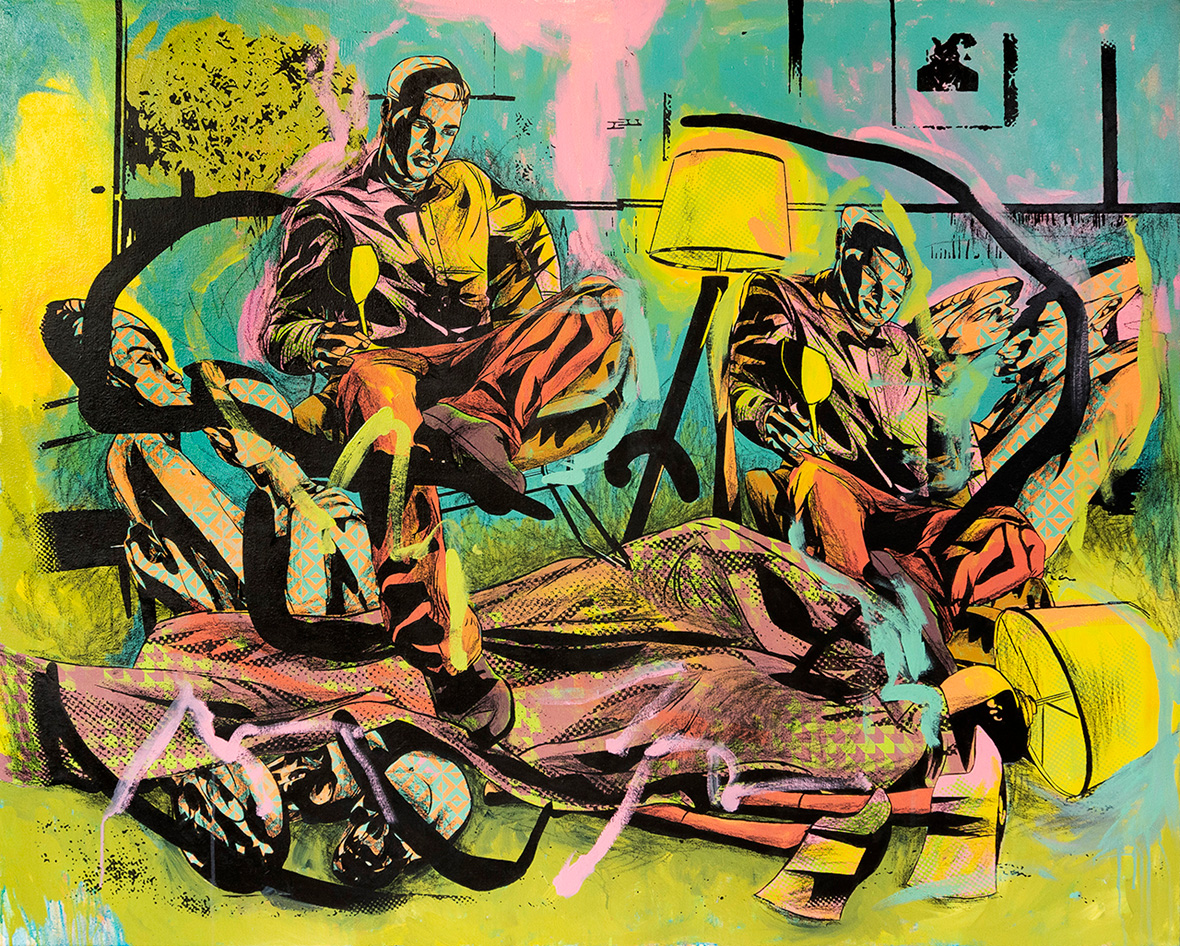
The series Signals from the Back Burner finds Canto’s subjects at home, residing in dark rooms with bare walls and ripped curtains, lit only by the ominous glow of their televisions. They’re unable to look directly at their family, friends, or themselves and are instead left gazing into on-screen doppelgangers. Their actual selves are rendered meaningless by interfering signals that contort them into unrecognizable shapes.
在《Signals from the Back Burner》(次要信号)系列中,黑暗的房间下家徒四壁,只有残旧的窗帘,唯一的亮光来自电视机。他们无法直视家人、朋友或他们自己,只能凝视着屏幕上的分身。通过干扰信号,他们被扭曲成无法识别的轮廓,真实的自己因而变得意义全无。
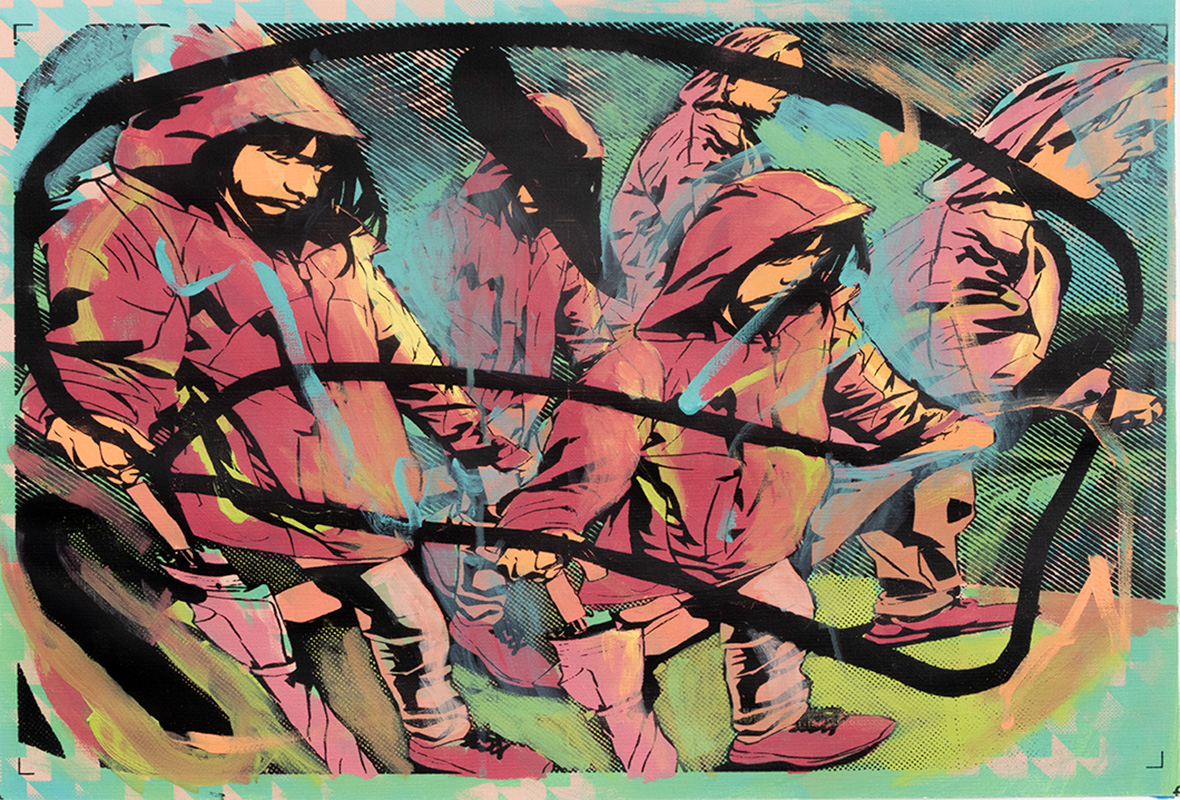
In the Like Humans Are series, partners affectionately embrace their loved ones—one crash-test dummy slumped into a depressing pile on the floor and another hoisted up like a martyr. Whether the dummy represents a blank slate for the partner to project their desires onto or if it symbolizes a person being crushed by the experiments of those in positions of power doesn’t matter. The interpretation is up to you. Or is it?
在《Like Humans Are》(就和人类一样)系列中,情侣们深情拥抱着各自的爱人——有的假人无力地倒在地板上,有的则像烈士一样被高高挂起。这些假人究竟投射了人们内心欲望的白板,又或代表着掌权者手下被压垮的后果,这些都不重要,因为 John 将对作品解析的权利交在了观众手中。
Like our stories? Follow us on Facebook and Instagram.
Website: www.lawrencecanto.com
Instagram: @cantolawrence
Contributor: Mike Steyels
Chinese Translation: Olivia Li

